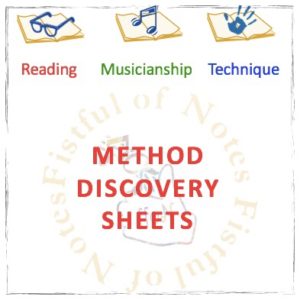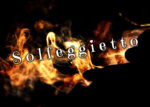How I Discovered What Methods Were Really About
 Methods are tools. And, with the advent of self-publishing, there are a lot of them available. Unfortunately, no single perfect method exists. I used to wish it did but now I think this is a good thing.
Methods are tools. And, with the advent of self-publishing, there are a lot of them available. Unfortunately, no single perfect method exists. I used to wish it did but now I think this is a good thing.
Most of us have several series that we choose to fit individual teaching situations. Taking the time and effort to formally evaluate a method helps you zero in on how a series might fit into your teaching. And, you just might discover something about yourself in the process.
Years ago, I went to a conference session at which a new method was premiered. The session was inspiring. I returned home and eagerly awaited delivery of the complete set. I anticipated a perfect fit, lots of fun, and great progress with my incoming early level students. Things didn’t turn out quite as I imagined.
I designed lessons carefully and incorporated teaching strategies as modeled by the conference clinician. The kids tried. I tried. There was a giant disconnect somewhere and nobody was happy. Ultimately we moved to another set of books, happy learning ensued, and the rest, as they say, is history.
I tried to use those method books several more times, always with mixed results. Eventually they found their way to the bottom of my overflow cabinet and stayed there. It took me a long time to realize that a big part of the failure was that my personality and teaching style did not mix with the method—at all. I was trying to be a teacher I was not and the students could sense it.
I began to think about how methods were constructed and how to compare them. In college, we had reviewed all the current methods and I was really still using those parameters. I thought hard about the methods I had been drawn to and those that I now used.
It dawned on me that, to compare the elements and skills presented in each series against each other, I needed to know what a set of books did well and what I would need to supplement. I needed to know this for three main areas; technique, musicianship, and reading. Eventually, I cobbled together a set of 3 sheets and, by trial and error, found that using them to evaluate the first two or three levels of a series gave me a really practical overview.
For many years, I’ve also used my sheets in a methods unit with my pedagogy students and in teacher mentoring. Some naturally grumble at the task but we persevere and, in the end, the comparison unit is one of the favorites. I’m always amazed (but totally honored) when I’m contacted by former students who tell me how knowing what to look for in a method helped with their own teaching and even helped them discover and refine the teaching personality and style within them.
A newly redesigned version is now available for free from Fistful of Notes by Gail Fischler on Teachers Pay Teachers. Method Discovery Sheets Just look under My Featured Items near the top of the page. Please enjoy.


